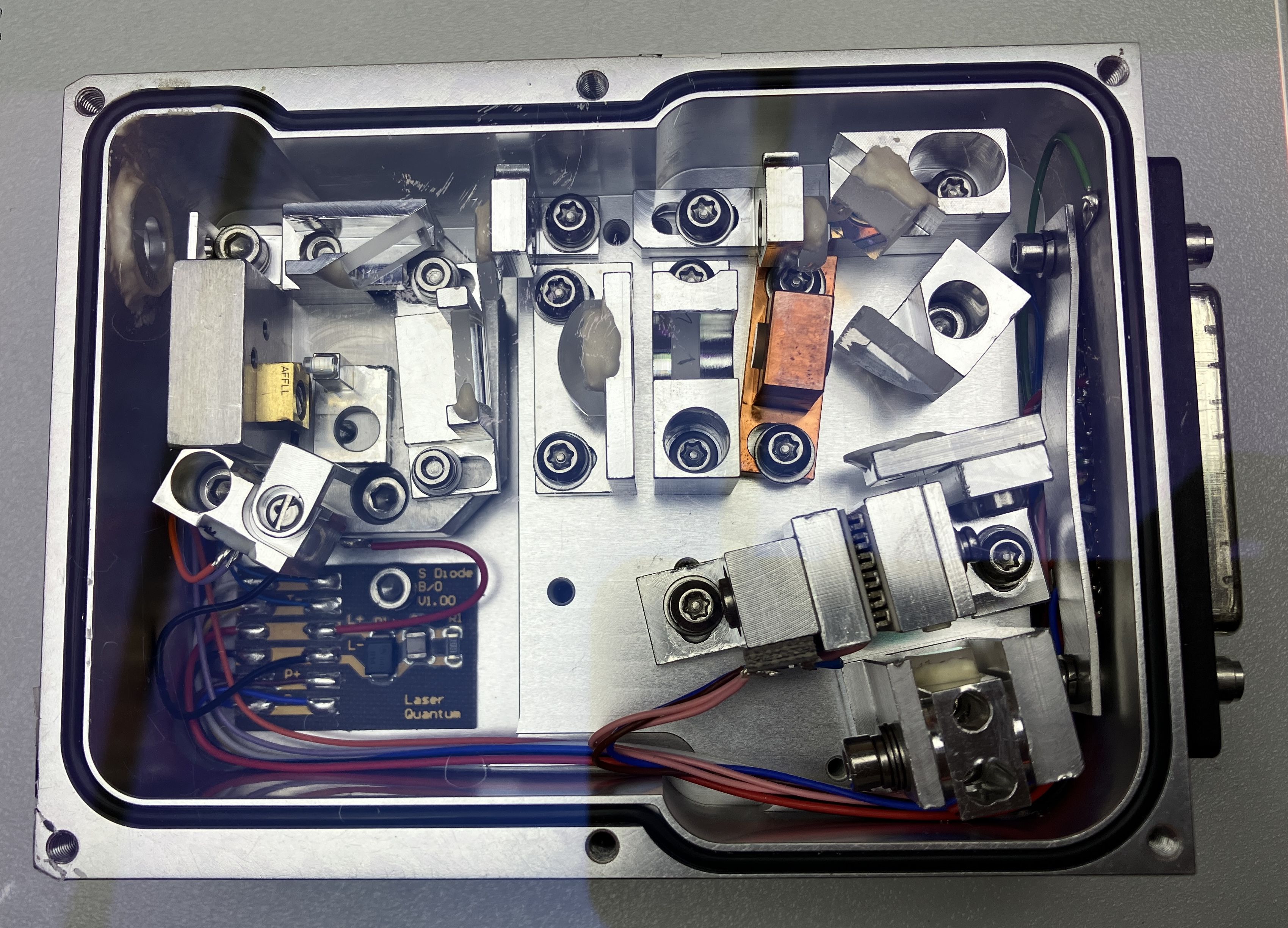The Laser Quantum IGNIS is a 660nm DPSS laser capable of a maximum output around 300mW. The IGNIS is extremely well constructed and has excellent beam characteristics.


This is a rather complicated DPSS laser, so be sure to strap yourself in while you read the explanation of the optical path below!

Sitting on a thermoelectric cooler (TEC) is a 5-watt, 808nm pump diode which produces laser light that is immediately passed through a beam-narrowing optic mounted in front of it. Afterwards, light passes through a cylindrical lens to condense the beam into a square and then through a focusing lens to further condense the beam into a small point. Following the focusing lens is a dichroic glass mirror, which serves as the high reflector (HR) for the Yttrium aluminum garnet (YAG) crystal contained within the small copper block. The YAG crystal converts the 808nm light to an infrared wavelength of 1320nm which then bounces off a small reflector, and through a ceramic disc called a spatial mode filter, which removes excess infrared light. A small metal block mounted to a TEC contains the Lithium triborate (LBO) crystal which doubles the frequency of light that passes and bounces back through it. This frequency doubling results in second harmonic generation (SHG) and thus, the production of 660nm laser light. This 660nm light passes through another reflector, expanding lens, collimating lens, and then finally through the output window. Near the output window, some of the light is reflected off to a photodiode within the unit, near the pump diode.

The SMD6000 power supply/controller is equally well built and also very easy to understand and work with. As far as connections, it has a 12V DC barrel jack input, DB-25 connector for the laser head, and 2 DB-9 connectors. One is for controls such as the interlock, the other is an RS-232 connection for computer control. We were able to communicate with this laser system over RS-232. The command syntax is relatively simple and can be found in the PDF linked at the bottom of this page. The laser system can be monitored and controlled over the serial interface much like the Coherent CUBE lasers. Notably, there is one undocumented command: "DUMP_" where the _ is replaced by a space. This will output several system operating parameters, some of which may be useful when calibrating the laser system.

Taking a look inside the power supply, we immediately notice several clearly-labeled test connectors, potentiometers, and status LEDs. This is always nice to see as it makes troubleshooting and re-use with other laser heads easier.

While working with this system, we were able probe all the pins and construct a pin out for the DB-25 laser head connector.
| DB-25 PIN | FUNCTION (JUNCTION BOARD ID) |
|---|---|
| 3 | (L+) |
| 6 | (P+) TEC_DIODE |
| 7 | CASE GROUND |
| 9 | (T+) THERMISTOR_DIODE |
| 12 | TEC_CRYSTAL |
| 13 | THERMISTOR_CRYSTAL |
| 17 | (L-) |
| 19 | (P-) TEC_DIODE |
| 20 | (T-) THERMISTOR_DIODE / THERMISTOR_CRYSTAL |
| 23 | PHOTODIODE |
| 24 | TEC_CRYSTAL |
| 25 | PHOTODIODE |
Laser Quantum released an absolutely spectacular video a while back showcasing the superior build quality and durability of their lasers by running one over with a vehicle and showing it in working condition afterwards!